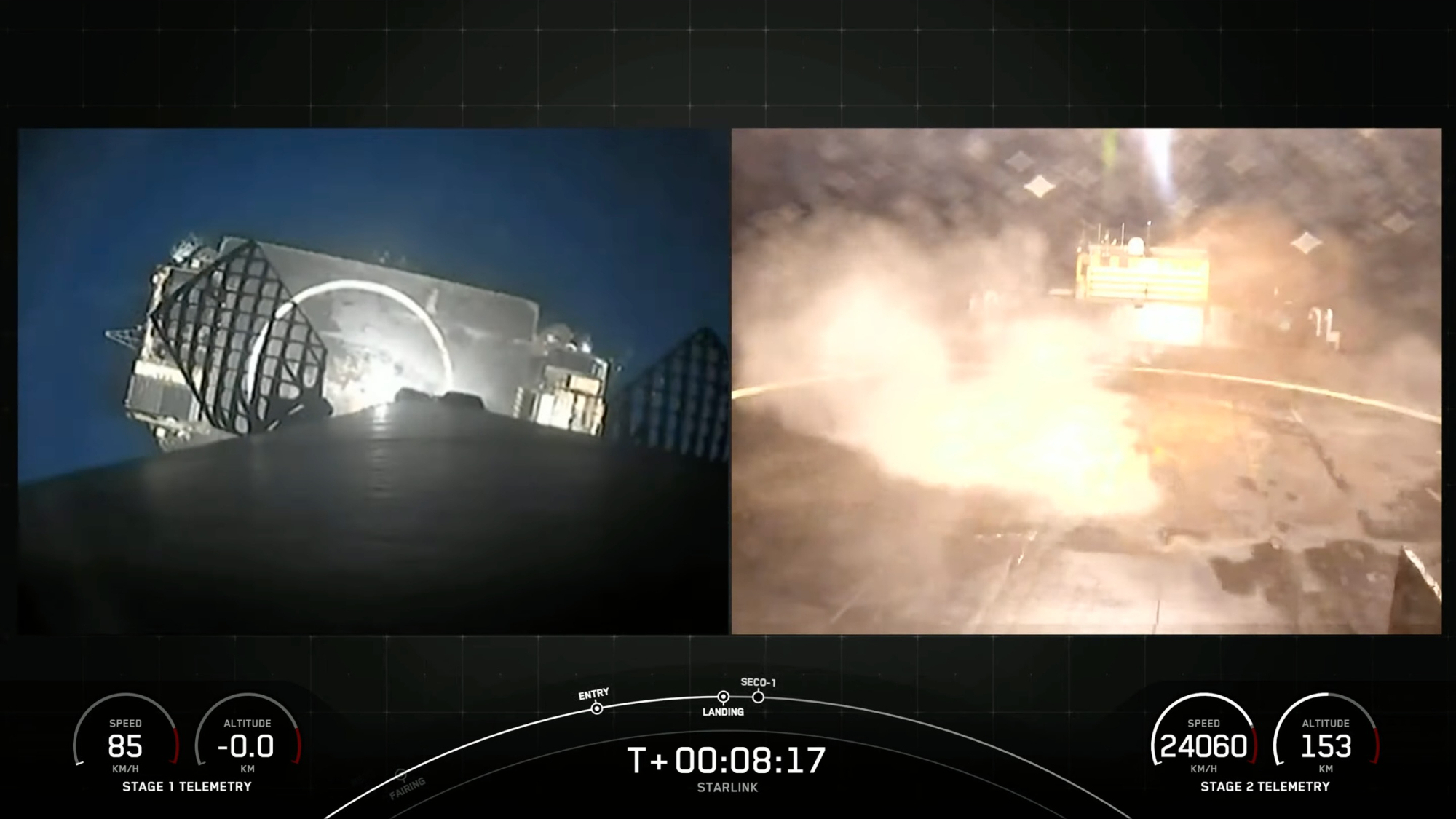SpaceX launched 22 more of its Starlink internet satellites early Friday (Aug. 11) and landed the returning rocket on a ship at sea.
A Falcon 9 rocket topped with the Starlink spacecraft lifted off from Florida's Cape Canaveral Space Force Station Friday at 1:17 a.m. EDT (0517 GMT).
The Falcon 9's first stage came back to Earth as planned, landing at sea on the SpaceX drone ship Just Read the Instructions about 8.5 minutes after launch.
Related: Starlink satellite train: How to see and track it in the night sky

It was the ninth launch and landing for this particular booster, according to a SpaceX mission description.
The Falcon 9's upper stage, meanwhile, continued hauling the 22 Starlink satellites to low Earth orbit, where they will be deployed about 65 minutes after liftoff.
Friday morning's launch was part of a very busy 15-hour spaceflight stretch. On Thursday morning (Aug. 10), Virgin Galactic launched its second-ever commercial mission, sending three private passengers — including the first mother-daughter duo and the first former Olympian — to suborbital space.
Get the Space.com Newsletter
Breaking space news, the latest updates on rocket launches, skywatching events and more!
And at 7:10 p.m. EDT (2310 GMT) on Thursday, Russia launched the Luna-25 lander, its first moon mission since 1976.
Editor's note: This story was updated at 3:35 p.m. EDT on Aug. 10 with the new target launch time of 12:27 a.m. EDT on Aug. 11, then again at midnight when the new time of 1:17 a.m. EDT, then again at 1:30 a.m. EDT with news of successful launch and rocket landing.
Join our Space Forums to keep talking space on the latest missions, night sky and more! And if you have a news tip, correction or comment, let us know at: community@space.com.

Michael Wall is a Senior Space Writer with Space.com and joined the team in 2010. He primarily covers exoplanets, spaceflight and military space, but has been known to dabble in the space art beat. His book about the search for alien life, "Out There," was published on Nov. 13, 2018. Before becoming a science writer, Michael worked as a herpetologist and wildlife biologist. He has a Ph.D. in evolutionary biology from the University of Sydney, Australia, a bachelor's degree from the University of Arizona, and a graduate certificate in science writing from the University of California, Santa Cruz. To find out what his latest project is, you can follow Michael on Twitter.









